One of the significant factors involving a driving test is a learner driver’s ability to move the car off and stop the car in a safe and controlled manner.
Driving examiners have a strict protocol in this area and missing a simple check whether moving off or stopping can make the difference between failing or passing the driving test.
The tutorials in this section explain exactly what the examiner is looking for, how it should be done, plus reference points for those that may need them. Included is also a tutorial for making hill starts and downhill starts.
A driving examiner will require you to stop the car alongside the kerb and move off again several times throughout the driving test. This is to ensure you have keen observational skills in regards to other road users, are considerate to other road users and that you can control the car safely when stopping next to a kerb.
A significant amount of driving tests are failed due to this procedure of moving off and stopping. Test failures are often due to bad observation before moving off and not issues such as stalling the car. See how to stop stalling a car and clutch control for help in this area.
Whether you are a learner driver or an experienced driver wishing to take the UK driving test, it is essential that you master the correct technique for moving off and stopping until you become proficient at all times.
Tutorials for learner drivers
The moving off and stopping tutorials if taught, followed and executed correctly will pass this particular stage of the driving test.
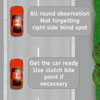
Moving off in a car
These tutorials are suited for either learner drivers or experienced drivers wishing to pass the UK driving test. Complete and in-depth tutorial for driving the car off from a stationary position at the side of the road.

Cover the brake Technique
Covering the brake and the clutch is an important technique to learn when moving off and stopping in preparation for the driving test. This tutorial explains the method and when it should be used.
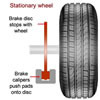
Braking in a car technique
Anyone can push the brake pedal to stop a car. It does however take specific braking techniques such as progressive braking to stop the car safely. this tutorial explains how to learn progressive braking and how using such braking techniques are safe, save of fuel and wear on your car.

Stopping a car
Moving off and stopping a car is a frequent cause for driving test failure. This tutorial provides an explanation of the correct procedure of stopping a car on the left side of the road parallel to the kerb. this guide explains stopping on the left only, as the examiner will not request that you stop on the right-hand side of the road.
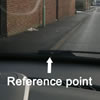
Kerbside parking
For many learners, parking next to the kerb during a driving test can be challenging, by trying to get a reasonable distance from the kerb without hitting it and by not ending up too far away. This tutorial provides reference points for making this process easier and with a much less possibility of hitting the kerb.
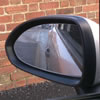
Hit the kerb
If during a practical driving test you are unfortunate to hit the curb / kerb, all may not be lost. This guide explains what remedial action can be taken in such an event so to increase the chances of still passing the practical driving test, even if you do manage to hit the kerb.
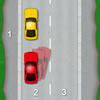
Moving off at an angle from behind a parked car
Moving off at an angle from behind a parked car is a manoeuvre often requested by the examiner during the practical test. This tutorial explains how to move off at an angle along with the most frequent mistakes made by learner drivers that easily result in a test failure.

Hill starts
If your driving test centre is located in such a place that will allow for hill starts, it’s highly likely the driving examiner will assess your ability for this manoeuvre during the practical driving test. A comprehensive tutorial details parking up uphill, downhill and how to correctly perform hill starts and downhill starts for the driving test.
